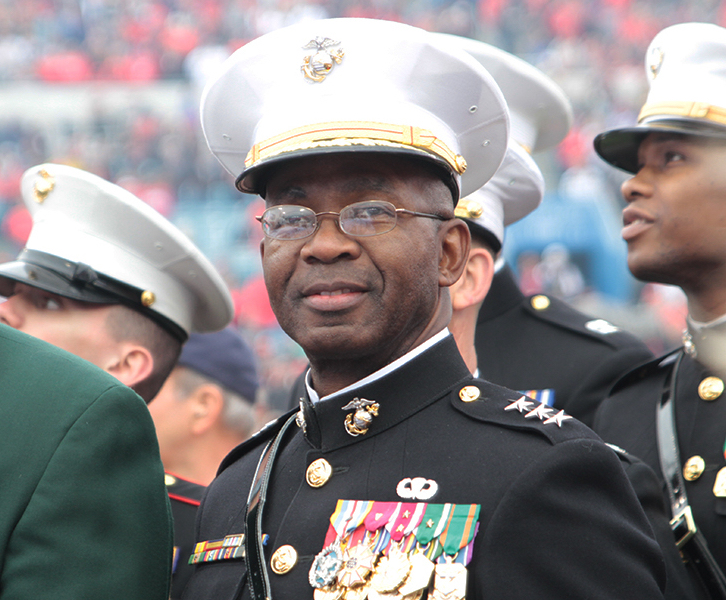
This post has been modified to reflect that only USNS Lewis B. Puller (T-ESB-3) will be modified to support MV-22 operations, not the Navy’s two Expeditionary Transfer Dock ships.
THE PENTAGON – Marine Corps operations are set for some big changes in 2017 with the deployment of the F-35B Joint Strike Fighter overseas, a move towards distributed operations as called for in the Marine Corps Operating Concept, and the potential addition of more ships to move Marines around high-threat areas, the deputy commandant for plans, policies and operations told USNI News.
As the Marines’ first operational squadron of F-35Bs prepares to move to Japan in the coming weeks, “we intend to fully incorporate the F-35 into the [U.S. Pacific Command] area of operations,” Lt. Gen. Ronald Bailey said in a Dec. 22 interview.
“When you start talking the things that it will do in terms of its range, its capacity, I think that will change the whole environment and change how we view not only exercises and operations but how we will train,” he said of the new airplane.
“So I call it a crawl, walk, run; we have to get out there and start learning some lessons, which we will. VMFA-121 will go out with 10 aircraft, and six additional aircraft will go out as part of the [31st Marine Expeditionary Unit’s fall patrol from Japan]. So they’ll get out on ground and just start doing what I call familiarization, and then they’ll learn some lessons from that. Then they’ll go and participate in a couple exercises in calendar year ’17; one of the exercises that they’re going to participate in the PACOM region will be in Alaska. … That’ll be approximately 6,000 Marines, sailors and soldiers that will be in the exercise, and it will give them the opportunity to get in the air and test its capability” in a contingency response-type exercise, he said.
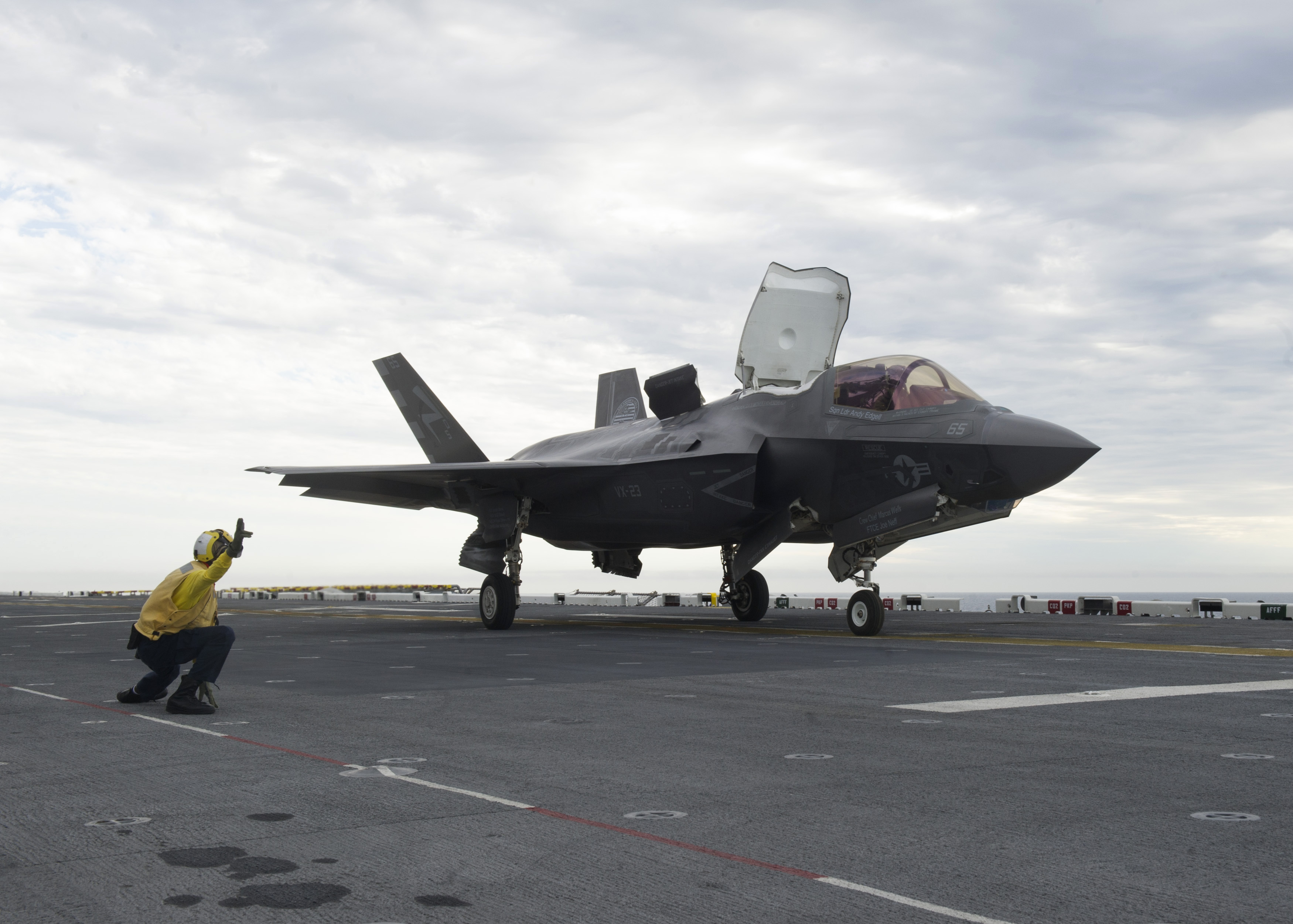
PACIFIC OCEAN (Oct. 28, 2016) An F-35B Lightning II aircraft launches for the first time off the flight deck of amphibious assault ship USS America (LHA 6). The F-35B short takeoff/vertical landing (STOVL) variant is the world’s first supersonic STOVL stealth aircraft. America, with Marine Operational Test and Evaluation Squadron 1 (VMX-1) and Air Test and Evaluation Squadron 23 (VX-23) embarked, is underway conducting the first phase of developmental testing for the F-35B Lightning II aircraft, which will evaluate the full spectrum of joint strike fighter measures of suitability and effectiveness in an at-sea environment. (U.S. Navy photo by Petty Officer 1st Class Benjamin Wooddy/Released)
The Alaskan exercise, called Exercise Northern Edge, is a U.S.-only biennial exercise that U.S. Pacific Command holds “to replicate the most challenging scenarios in the Pacific theater to ensure joint U.S. forces are trained and prepared to respond to crises in the Indo-Asia-Pacific region, with over 6,000 U.S. service members and 200 aircraft from across the continental United States and Asian-Pacific,” Bailey’s office explained.
Additionally, the F-35 is expected to participate in Exercise Forager Fury in Guam this calendar year, and in Exercises Ssang Yong and Max Thunder in the Republic of Korea, Exercises Pitch Black and Southern Frontier in Australia, and Exercises Forager Fury and Valiant Shield in Guam in 2018.
Bailey said bringing the aircraft to the Pacific allows the squadron to exercise in training ranges much larger than those available at home, and eventually it will allow the squadrons to begin testing interoperability with allies in the area such as Japan and Australia.
For the time being, these allies won’t work directly with the F-35B but instead will open their airspace for training purposes. Once the Marine Corps learns best practices and gets farther along in writing tactics, techniques and procedures, then the service will begin sharing lessons learned with its allies – such as Japan and Australia, who are both buying the F-35A conventional take-off variant.
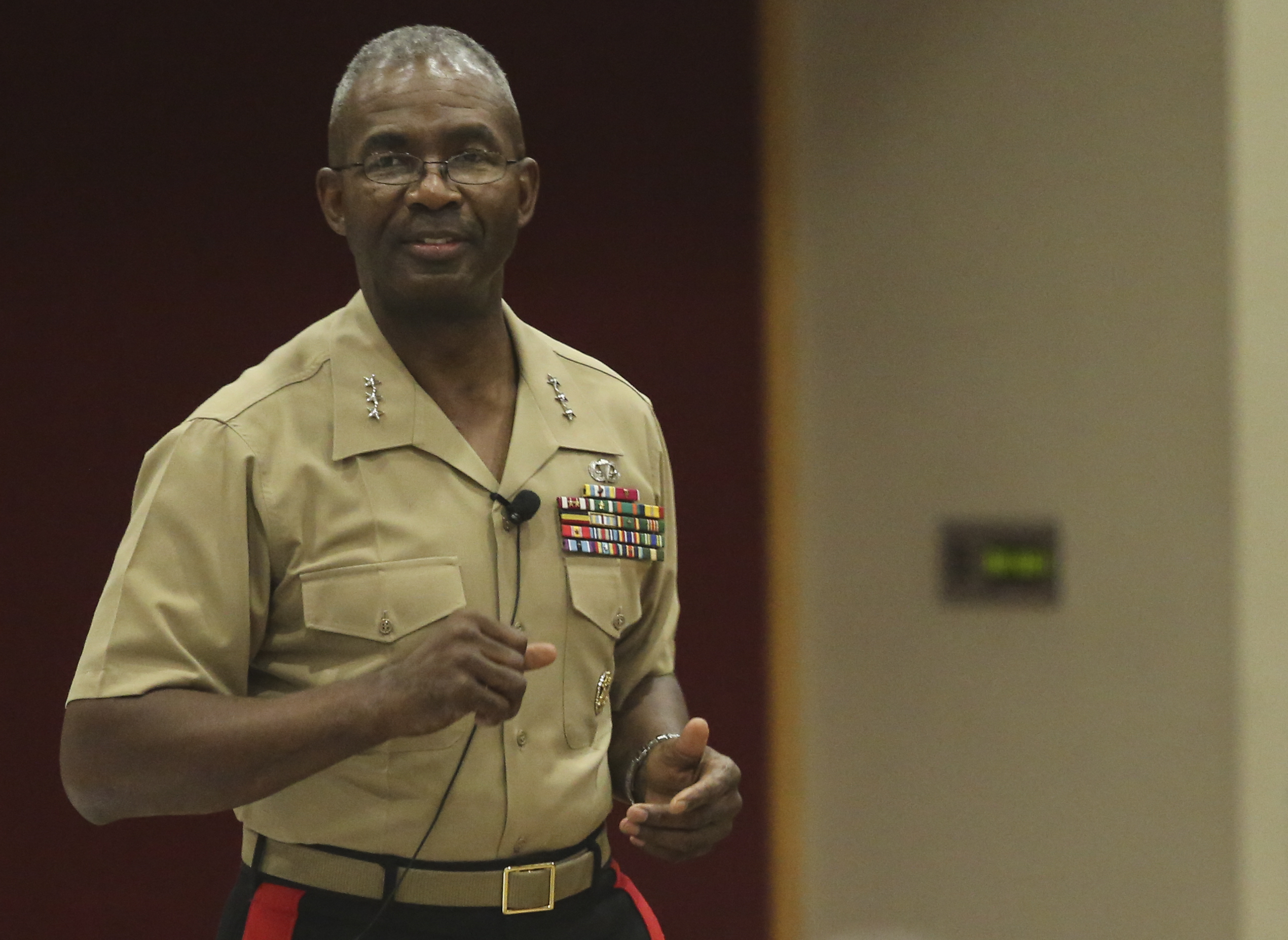
“I think the first thing we have to do is become familiar ourselves and work our way through our own challenges that we have before we start bringing others in,” Bailey said.
“Particularly when a new platform is brought in, you want to try to work through your own organizational issues. So the first thing that I would say to you on that is that as a Marine Corps organization we’re going to try to become familiar, make sure we as a squadron or as a group or as a Marine Corps have worked our way through the lessons learned. So we’re going to go through a lot of lessons learned, and then we’ll start sharing those with our allies and our partners and our friends because that prevents a lot of things from going wrong, when you can take those lessons learned and bring [those allies] back in and say, ‘you know we tried this and this doesn’t work.’ Prior to them taking on that platform, we’ve already gone through those challenges.”
Though Bailey stressed the need to take it slow in terms of becoming familiar with the airplane, learning the right lessons and then working with other services and other nations in an operational setting, the operational tempo for VMFA-121 will be anything but slow this year. As the service moves towards a focus on distributed operations, the F-35 will play a pivotal role. If each squad or platoon is a node, the F-35 will be the network that connects them, processing and sharing information faster than ever before.
As an example, Bailey said he was at Marine Corps Air Ground Combat Center Twentynine Palms, Calif., to observe an infantry officers course last year, where officers riding in the back of MV-22 Ospreys in a raid scenario had tablets that were tied in to an F-35. Bailey and others observed from a simulated F-35 – a room with multiple computer screens that showed all the information an F-35 pilot would have at his disposal while flying. A Marine in one Osprey could change the plan for the raid based on new information, and that change was sent to both the tablets in the other Ospreys and to the F-35 pilot
“The plan changes and I can send him that change in a burst, not try to get on the radio and go through a satellite and come back; I can just send him the exact changes and modifications,” Bailey said.
“And so you pull all that capability together, and you can see how that platform will be able to revolutionize the battlefield and give the Marine on the ground a capability that we’ve never had before. I think that’s a game-changer when you start talking distributed operations and you start talking the environment of the future.”

“You want to be able to out-cycle your enemy, and I think this will give us the opportunity to out-cycle our enemy in terms of speed, in terms of application of information that comes in,” he added.
The F-35 deployment will also help bridge the Marine Corps and Navy operational forces this year, with the 31st MEU and Wasp Amphibious Ready Group’s fall patrol – the first that will feature F-35s – teaming up with three destroyers to create an “upgunned surface action group.”
“I see that as a continuation or a pickup of some things that had gotten away from us because of deployments – being involved in Iraq and Afghanistan was our primary focus over the last 15 years – so we’re kind of going back to our roots and things that we had done before but had gotten away from. You start talking Navy Marine Corps team, combining cruisers and destroyers together (with amphibious forces), when you start talking surface action groups – that’s not new, we’re going to pick up. What it will allow us is an opportunity to now, with the Arleigh Burke class new ships, to test out the [command and control] and work through some of the challenges that we will have with the new platform (F-35). So the lessons learned that the squadron has been gaining, we will also apply those when we start the Navy-Marine Corps team amphibious operations,” he said.
“You start talking cruisers and destroyers, you’re talking fire capability, the Navy’s top fire control capability. When you have the F-35 fifth-generation platform now, we grew up in this Marine Corps talking combined arms, and we talk it, but now you have this platform that can see and sense and pull everything together, and so that in itself will enhance destroyers and cruisers.”
The Marine Corps also hopes to increase its work with the Navy by finding more ships to put its Marines on. The Navy’s new Force Structure Assessment increased the requirement to 38 amphibs – previously the service had acknowledged the need for 38 but set a fiscally constrained requirement at 34. Though it will takes years for the Navy to grow the size of its amphib fleet, Bailey said work is being done to find more alternate platforms for the Marines to use in the short term, and is making modifications to some ships to allow them to accommodate Marine Corps aircraft such as the MV-22.
Bailey said the Marines have to try to deal with “high threat posed areas” such as the Gulf of Guinea and the Mediterranean Sea through land-based units today, and through the Naval Board the service is in talks with the Navy “about what has occurred in terms of change in environment, change in threat. Think about where we were three years ago and where we are today, it’s kind of interesting – Crimea, Ukraine, Sudan, you can just go down the list, not to mention humanitarian (assistance)/disaster relief, threat from Russians in Europe. All these things are different. So the Navy and Marine Corps through the Naval Board, we are able to adapt and respond to the changing nature of the environment.”
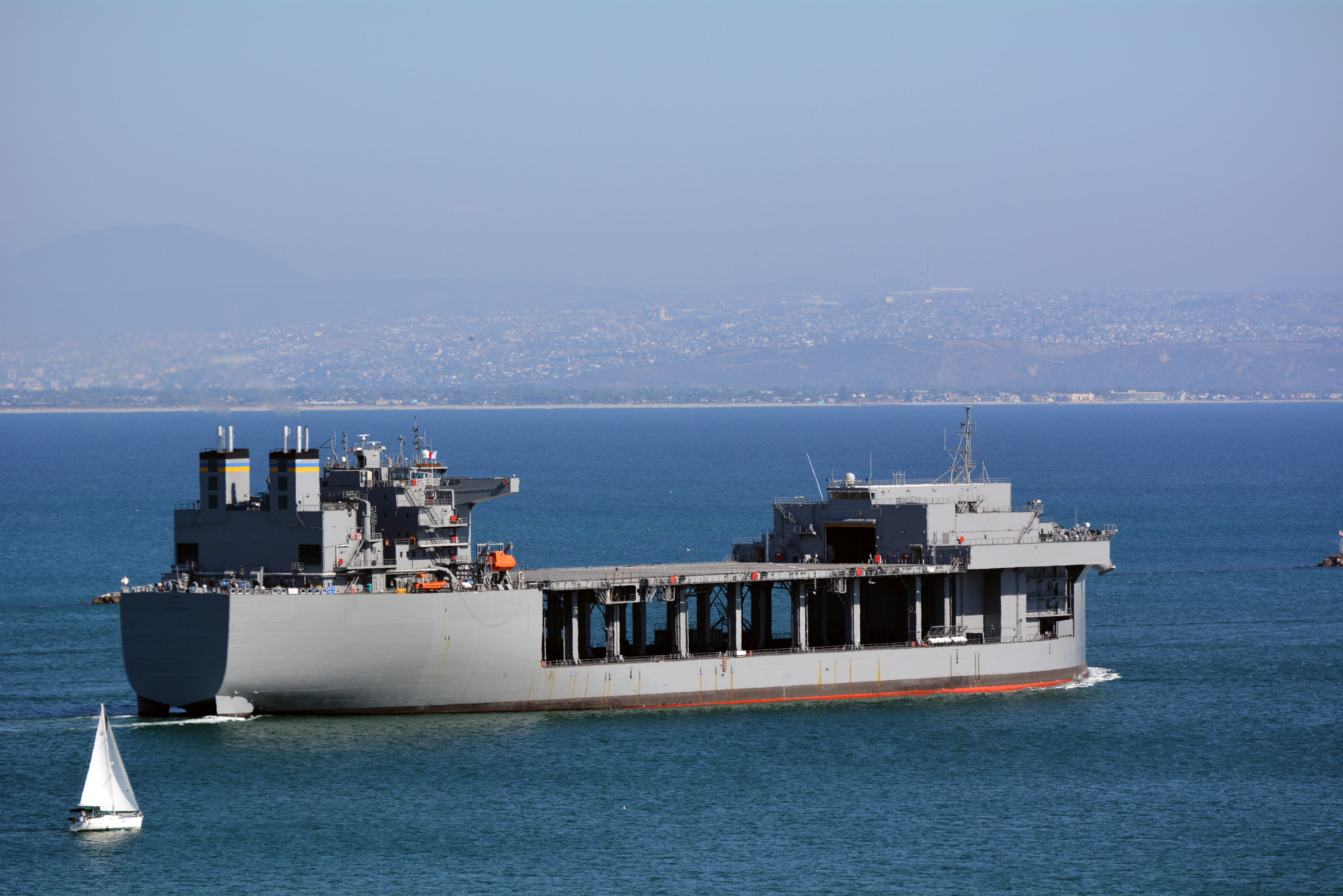
As a result of these talks, modifications will be made to the Navy’s Expeditionary Sea Base USNS Lewis B. Puller (T-ESB-3) to accommodate MV-22s. USNI News understands that the modification process on Lewis B. Puller has already begun. Once these modifications are made, the ships might be made available in theater to move Marines around as needed.
Marines in 2017 will also benefit from greater collaboration with some allies, as other nations build up their own amphibious forces. Australia in particular will reach an important milestone, deploying its first ARG/MEU this year, and Bailey called their new amphibious force an “outstanding capability” to partner with.
“There was a planned approach to make sure that we shared with them our knowledge and expertise on amphibious operations,” he said, noting that former commandant retired Gen. James Amos sent a former MEU commander and then an aviator to Australia as liaisons to inform their ARG/MEU development.
“So now we’re talking a partner who has been fighting with us since World War II or before, and you couldn’t ask for a better partner to help the U.S. in its role in the Pacific theater. So I see that as a tremendous opportunity, not only for the U.S. but for the region to assist and help us with security-type operations, assist and help us with theater security or humanitarian (assistance) and disaster relief, when in fact you have another nation out there with an LHD-like capability or with an ARG/MEU-like capability; it may be small in scale but it’s still another amphibious capability that’s out there.”
“There’s nothing like having a strong ally with a common focus,” he added, and said that the U.S. Marines would work with the Australians more and in more domains now as a result of their new capability.
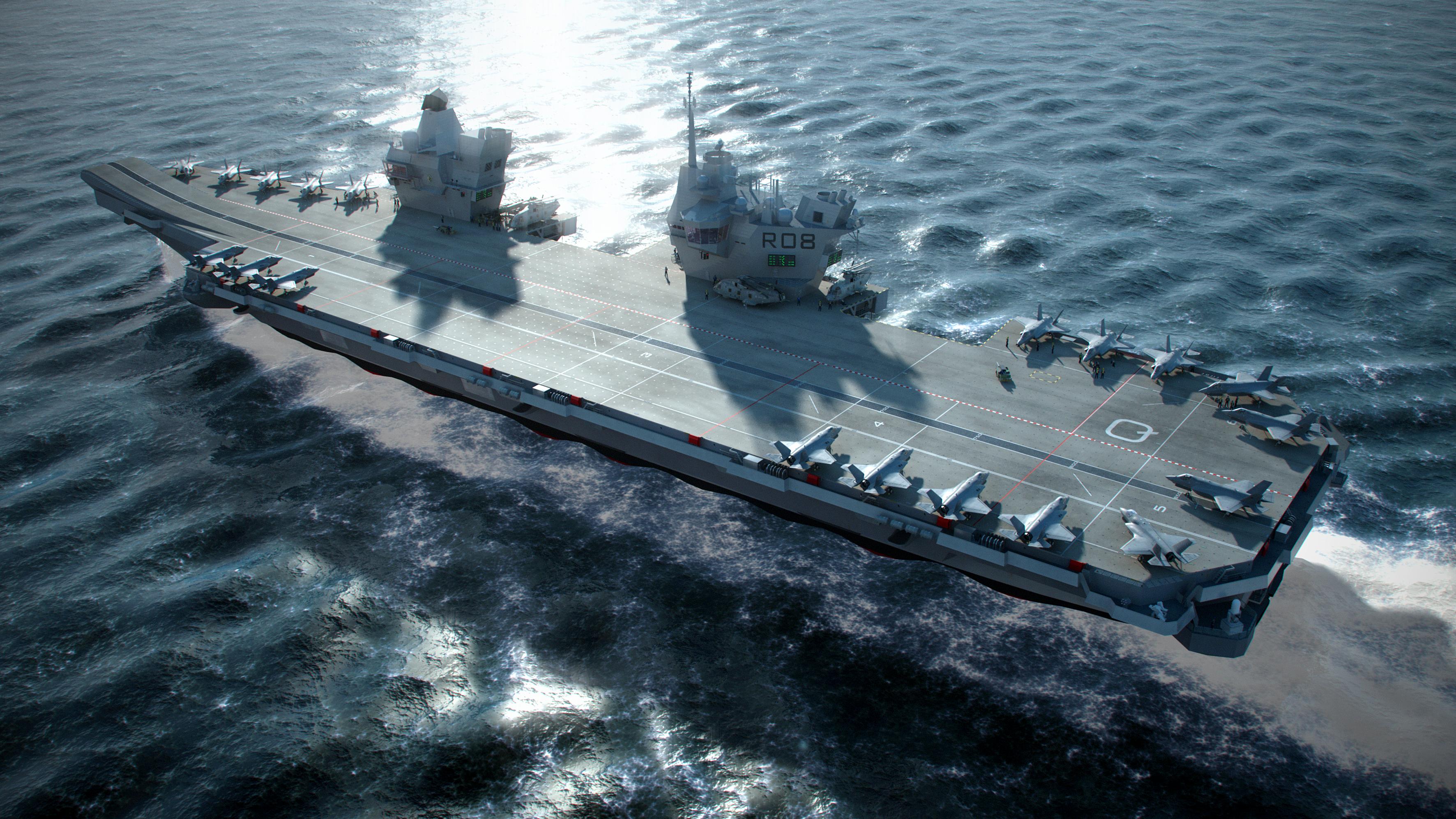
He said the British would also be buying the F-35B for their Queen Elizabeth-class aircraft carriers, and “I see more amphibious operations in terms of working together” with them as well.
Bailey said 2017 would also bring closer relationships with Asian partners like Singapore, Malaysia and Vietnam, as well as European partners like Norway that can assist the Marine Corps in reestablishing a cold weather capability.
Bailey also predicted that 2017 would be shaped by ongoing innovation, particular with 3D printing.
“I’m fascinated by the developments and changes that 3D printing is bringing about,” he said.
“Yes there are things we’ll have to work through in terms of certification or verification of parts, but just that thinking – I’ll give you an example, years ago (when briefing plans ahead of an operation) you would build little squares of dirt, and you would have a map, and you would build your [terrain map] using dirt and strings. Now … you and I are getting ready to go out on an operation, I’m not going to brief you from a map, I’m going to brief you from a replica of the ground, the buildings and everything that’s on there, to include the windows, due to 3D printing. So that’s just a small example.”
In reflecting on what 2017 will bring for the Marine Corps, Bailey echoed what Commandant Gen. Robert Neller likes to say: “The only thing we’re not going to do is stay the same.”





